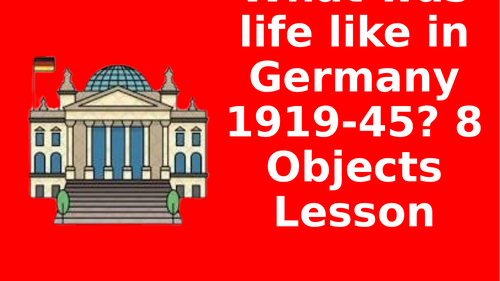

This 43-slide PowerPoint begins with a Starter Activity in which the class is invited to guess the top 6 things a museum exhibition requires to be successful (this is done in the form of a Family Feud-style game). This leads to a discussion of the purposes of a good exhibition with a clear theme/concept and quality content displayed in an accessible manner. This introduces the lesson title and graduated aims (all will/most will/some will). The class is then invited to consider some key areas of the period, and an example of each is given (e.g., for the early Weimar era, the example of hyperinflation banknotes is given as a possible exhibition artifact, or for Kristallnacht a shard of glass). The class then creates their own exhibitions, ensuring they only select a maximum of 8 items and explain and analyse them as they relate to the period. When they present, the class peer-assesses using the criteria on the sheet (which link back to the Starter Activity). The lesson aims are revisited before the lesson concludes with a plenary in which the class is invited to take on the role of “Voices of Germany 1919-45” or “Voices of the Future” and discuss their thoughts on a range of artifacts (these are provided in one slide, but it works best if you use those that students came up with themselves in their own exhibitions). I designed this lesson for high-achieving IB students, and it works well to introduce a topic on authoritarian states or to conclude it. It can also be used for high-ability, slightly younger students. This lesson is written in UK English.
Something went wrong, please try again later.
This resource hasn't been reviewed yet
To ensure quality for our reviews, only customers who have purchased this resource can review it
Report this resourceto let us know if it violates our terms and conditions.
Our customer service team will review your report and will be in touch.